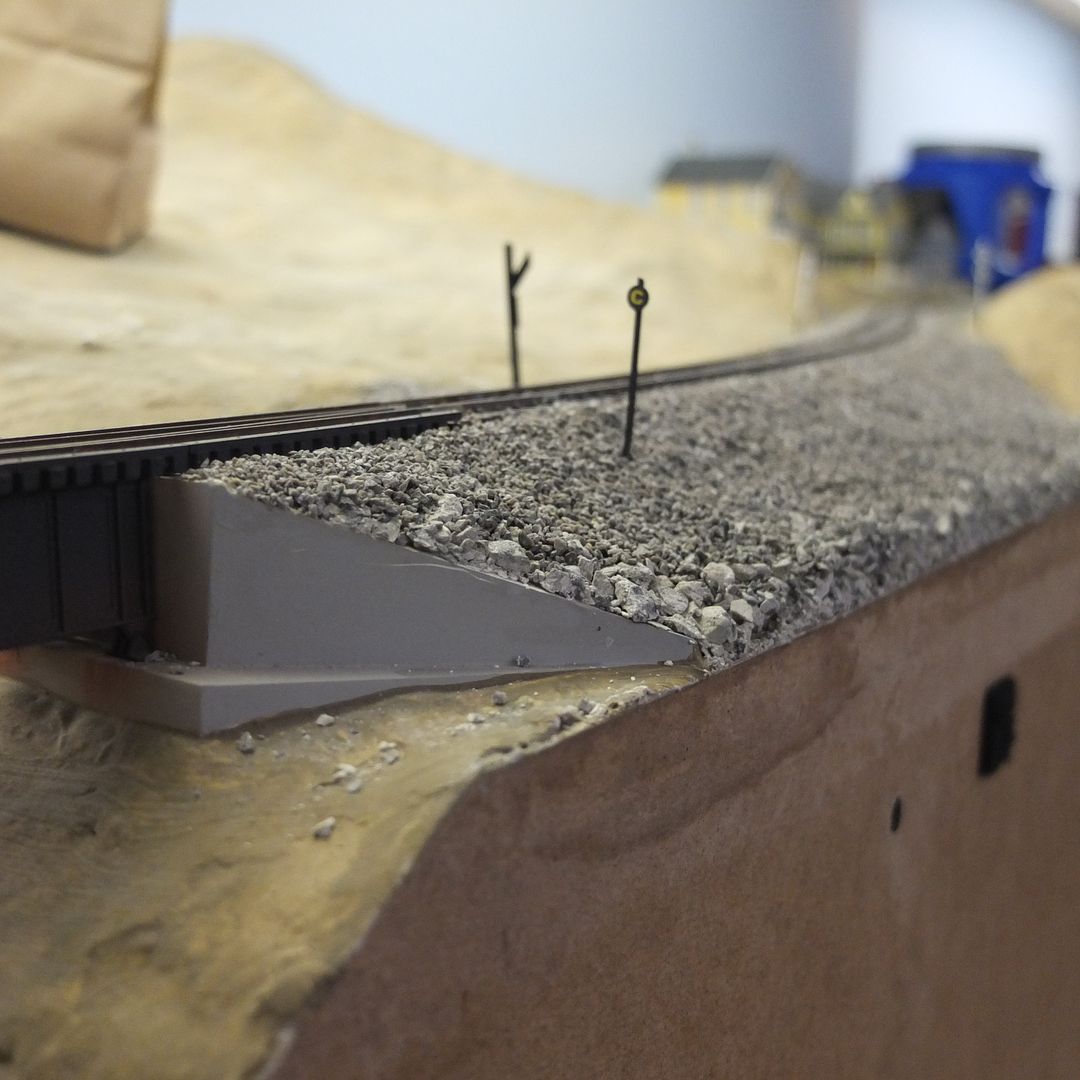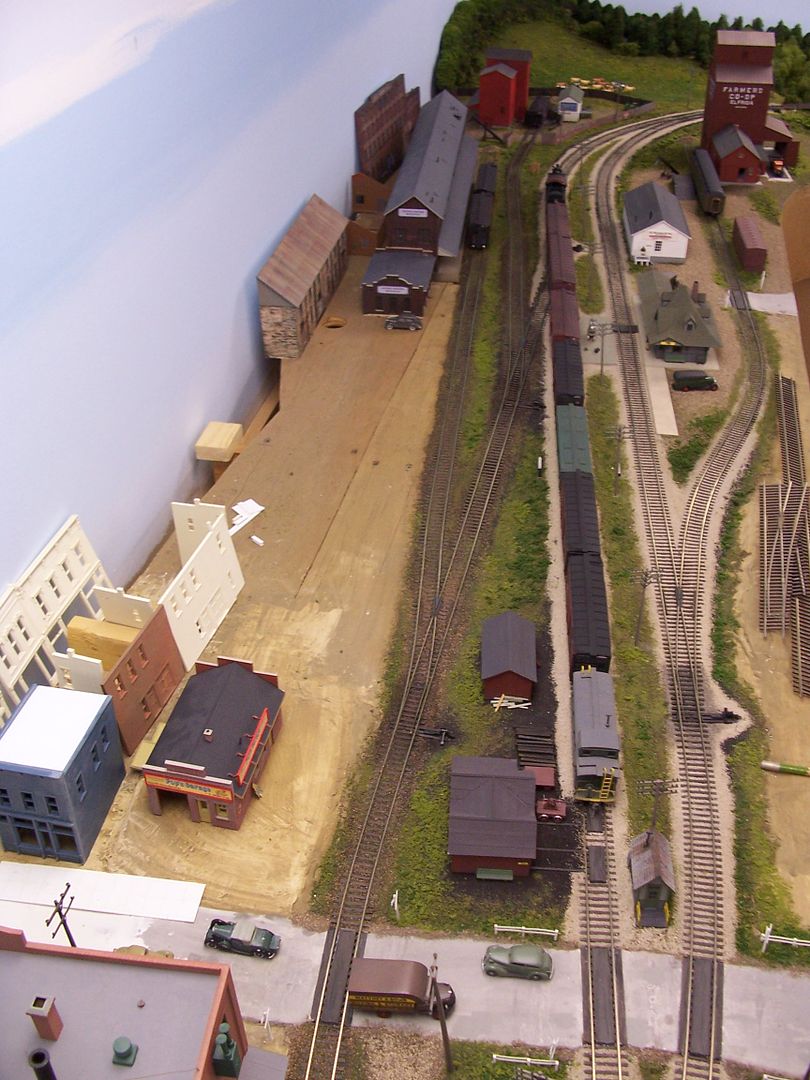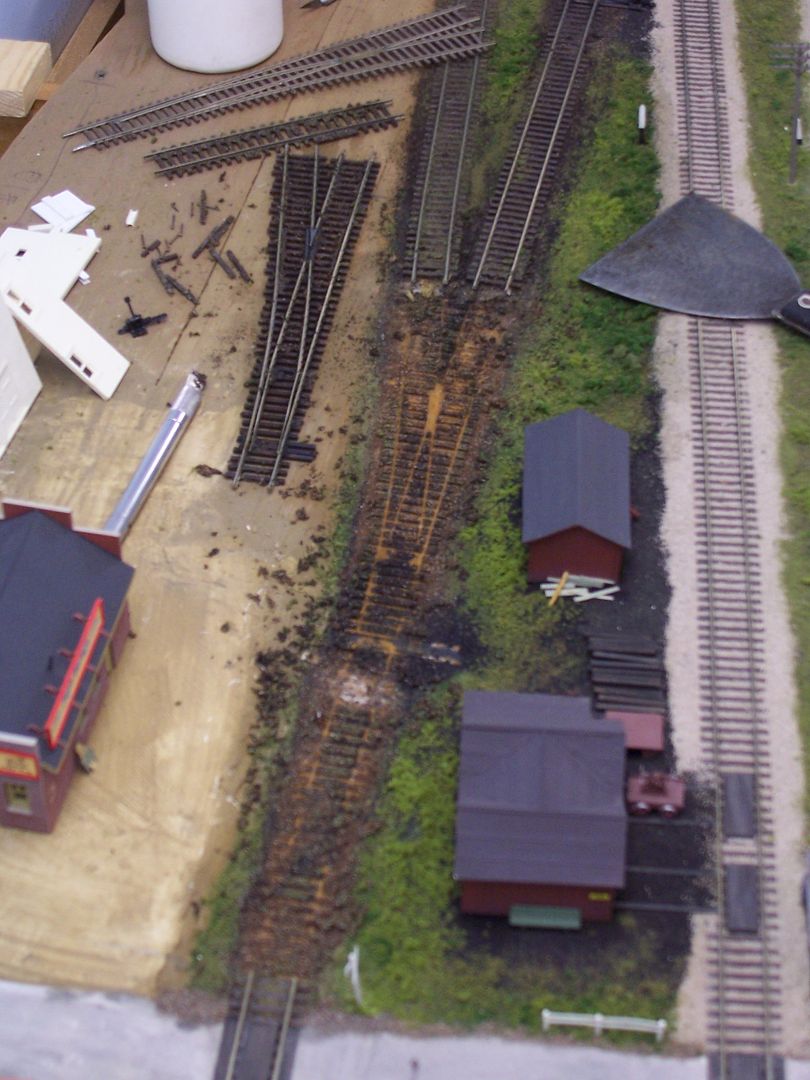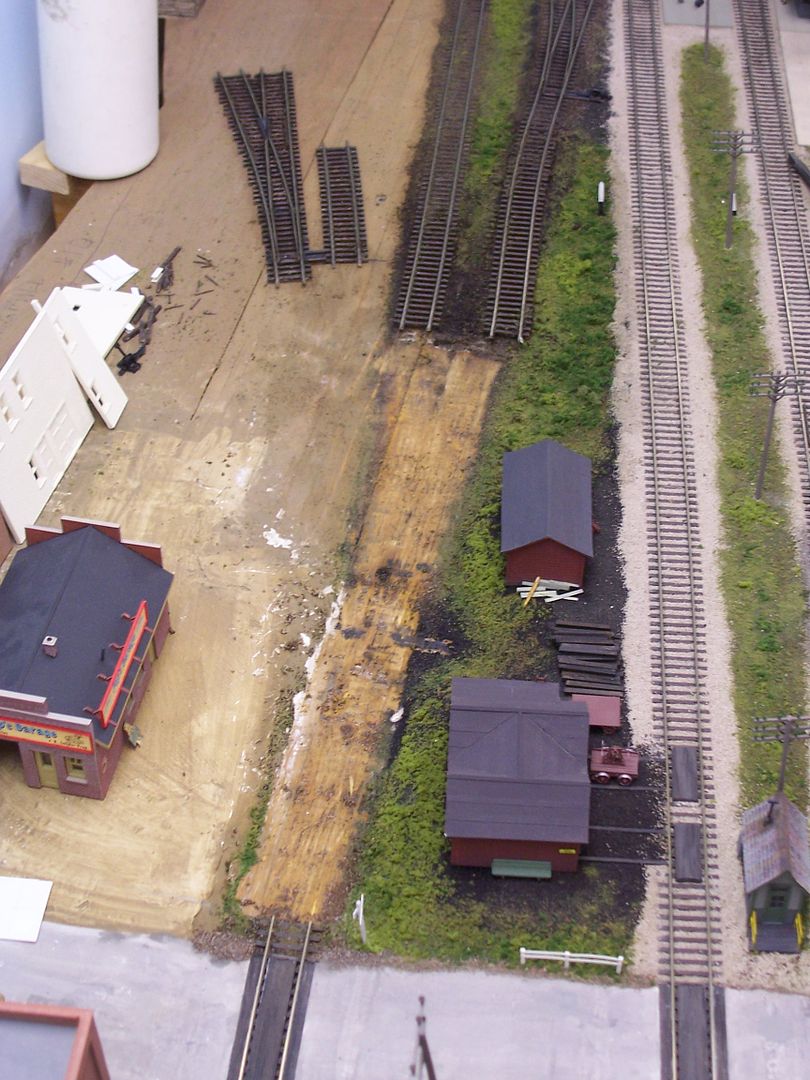I have not done this for a long time and forget the formula. What is the percentage of white glue to water to glue down ballast. I know that you add 2 drops of detergent to mix.
Thanks In Advance
Caldreamer
I have not done this for a long time and forget the formula. What is the percentage of white glue to water to glue down ballast. I know that you add 2 drops of detergent to mix.
Thanks In Advance
Caldreamer
I use a 4:1 ratio of water to glue. That works just fine. Be sure to spray or dribble 70% isopropyl alcohol on the ballast first for better absorption of the glue mix.
Rich
I did some experiments, and found 6:1 worked. Much more thinning, and it wouldn’t make a strong bond. This was for Arizona Rock Ballast. Different ballast might need different ratios.
It’s VERY easy to do yourself: you make some little piles of ballast on a test space. You apply different ratios of the mix. You let them thoroughly dry. You poke at them with your finger or a stick. You make a decision.
Ed
Ed, that is good to know. I have not tried anything more diluted than 4:1, but if as much as 6:1 works, that is a money saver especially if you use matte medium as I do. I use Scenic Express real rock ballast.
Rich
What got me started on the experiment was remembering a layout where the ballast looked like it was coated with the glue. Looked BAD.
Once the ratio is chosen, I do urge folks to do a test, first.
I expect the same ratio I used on the Arizona would work on any real rock ballast. I was thinking more of the Woodland Scenic stuff, which MIGHT absorb something, which MIGHT influence the ratio.
Ed
I use Woodland Scenics ballast. I use a 3-1 ratio of water to glue. I apply a lot of isopropyl alcohol from a pipette. I don’t add dish detergent. I use a small Elmer’s Glue bottle to both mix and apply the dilute glue.
The pipette application of alcohol and Elmer’s bottle application of glue gives neat controlled application of both. Spraying either just makes a mess that has to be cleaned up.
I have been using 90% alcohol just because that’s what was available. I do find that this alcohol plus glue dries faster than glue-detergent mix, probably because the alcohol evaporates so quickly.
I’ve found in other contexts that it can matter what the brand of glue is.
I advise using ‘Ed’s Method’ for a given brand of glue to determine what works best – then perhaps posting here to see what ratios are most economical or best in appearance for specific types.
In my case, it was Liquitex Ultra Matte Medium.
I did not add detergent or alcohol to my mix. Maybe I should have, but I didn’t. I put the drops down next to the wetted ballast, and it scooted right in.
For wetting the ballast, I misted it with nominal 99% alcohol. I thought, perhaps incorrectly, that the less water the better. Plus, it’s what I had.
I used a fine mist sprayer for the alcohol, similar to these:
Ed
I don’t recall for sure, but I think that I used three parts water to one part of white glue. I don’t add dish detergent, though, but do thoroughly pre-wet the area to be treated using a sprayer capable of spraying a fine mist. I use plain tap water for that, with a few drops of dish detergent added, and thoroughly wet the areas that will be receiving the glue, until the “wet” water permeates the entire depth of the scenic material, which is often quite deep…

For my first scenery work, I used matte medium, diluted slightly, simply because I had it on hand from an unrelated project.
Due to the cost, I switched to using white glue, which is considerably cheaper, but works just as well.
It’s also a better choice if one day you decide to redo parts of your layout, as a thorough spray with wet water will soften the areas where scenery needs to be removed.
Here’s an example:
This turnout, at left, needed to be moved in order to accommodate a new trackside structure…

I unsoldered the turnouts which needed to be moved, then sprayed the entire area with “wet” water, which allowed the track to be lifted from the ballast and surrounding ground cover…

…then scraped-up the left-over mess…

…then re-aligned the existing track, and re-installed the turnout, along with some new flextrack, then re-ballasted most of it…
Other than costing more is there a downside to using the traditional 50/50 dilution? That is what I remember as most commonly recommended.
Rick
In my experience with matte medium, a 1:1 mix of water to glue is overkill, and the result is a very thick mix that is difficult to apply. I have experimented with 2:1, 3:1 and 4:1. I find that a 4:1 water/glue mix is ideal. And, it is a lot easier to remove the dried 4:1 mix from track by soaking it in 70% isopropyl alcohol.
Rich
I buy white glue in large jugs so it is fairly inexpensive. I go for a 2:1 ratio because I want a strong bond. I’ve had too much crumbling ballast using a higher ratio.
I use 2 1/2 to 3-1 water to glue ratio.
Based on what everyone here is saying, it looks like the ratio does not have to be very exact. Apparently a wide range will work fine.
I use 3-1, make sure you stir it up after it has been sitting by sloshing it around some, otherwise some of the stuff that makes it matt will settle out.
West Lakeview Ballast by wp8thsub, on Flickr
I use Elmer’s white glue diluted a bit thinner than 50:50. I’ve noticed that very thin dilutions can still hold more or less OK, but don’t always stand up to an operator accidentally hitting the ballast with something like an uncoupling pick.
I worked up my 6:1 ratio using a particular brand of matte medium (as discussed earlier). Maybe it matters what the glue choice is, but my ballast isn’t particularly susceptible to pokes and prods.
It is SO easy to test your own mixture before you apply things to your layout. Do the test and prove to yourself that your mixture works well BEFORE putting it all over your layout.
That “experiment” thing also applies to ballast application methods. Try a test section first, before doing it for real. A Cheap Thrill!
Ed
That won’t happen with matte medium because it acts as a binder.
Rich
Hello All,
I realize it’s a little off-topic but here’s another method…
Instant Track-Tackit Ballast Adhesive Questions
Hope this helps.
It depends what is being glued. Woodland scenics ballast gets about a 4 to 1 mix of white glue. My yards are fine washed mason sand. Being silicate it gets a stronger mix about 2 parts water to 1 part glue. Any more glue becomes a satin shine. My dirt roads are paint before it dries gets a coating of silt for texture and later a spray of white glue and water mix of 6 parts water to glue.
It’s not rocket science, do what you think is right for you. I’ve seen ballast that looks like someone pored straight glue on it.
Pete.
I’ve found that the most important step for creating solid ballast is the pre-soaking of the groomed ballast. I prefer ordinary tap water with a few drops of dish detergent. Alcohol will work, too, but it costs more and evapourates too quickly if you’re doing long stretches of ballasting.
The wetting agent must be in an amount sufficient to penetrate right down to the bottom of the ballast and any other loose material that’s being used (I use broken Durabond-90 patching plaster, smashed into rip-rap-sized lumps). If the wetting agent doesn’t penetrate completely to the bottom, the diluted glue will form a crust of cemented ballast on top, which can be easily broken while cleaning track or even by a minor derailment.
There are areas on my layout where the ballast is over 1" deep, and you could whack it with a hammer without fear of disturbing the ballast profile.
I use both Woodland Scenics “walnut shell” ballast and also crushed limestone, along with ordinary dirt and ground foam on less-used tracks.
Wayne